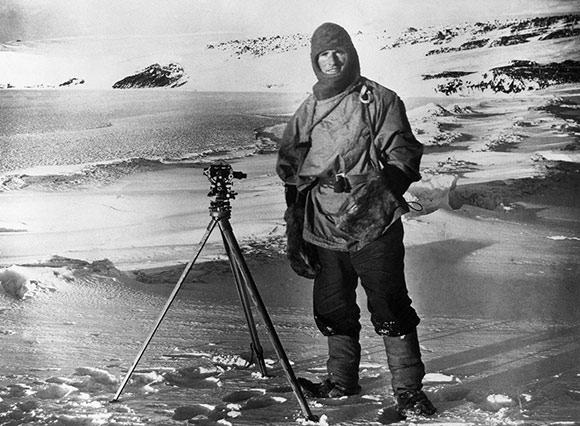After a two-month ordeal, the expedition of British explorer Robert Falcon Scott arrives at the South Pole only to find that Roald Amundsen, the Norwegian explorer, had preceded them by just over a month. Disappointed, the exhausted explorers prepared for a long and difficult journey back to their base camp.
Scott, a British naval officer, began his first Antarctic expedition in 1901 aboard the Discovery. During three years of exploration, he discovered the Edward VII Peninsula, surveyed the coast of Victoria Land–which were both areas of Antarctica on the Ross Sea–and led limited expeditions into the continent itself. In 1911, Scott and Amundsen began an undeclared race to the South Pole.
Sailing his ship into Antarctica’s Bay of Whales, Amundsen set up base camp 60 miles closer to the pole than Scott. In October, both explorers set off; Amundsen using sleigh dogs and Scott employing Siberian motor sledges, Siberian ponies, and dogs. On December 14, 1911, Amundsen’s expedition won the race to the pole. Encountering good weather on their return trip, they safely reached their base camp in late January.
Scott’s expedition was less fortunate. The motor sleds soon broke down, the ponies had to be shot, and the dog teams were sent back as Scott and four companions continued on foot.
On January 18, they reached the pole only to find that Amundsen had preceded them by over a month. Weather on the return journey was exceptionally bad, two members perished, and Scott and the other two survivors were trapped in their tent by a storm only 11 miles from their base camp. Scott wrote a final entry in his diary in late March.
The frozen bodies of he and his two compatriots were recovered eight months later.


